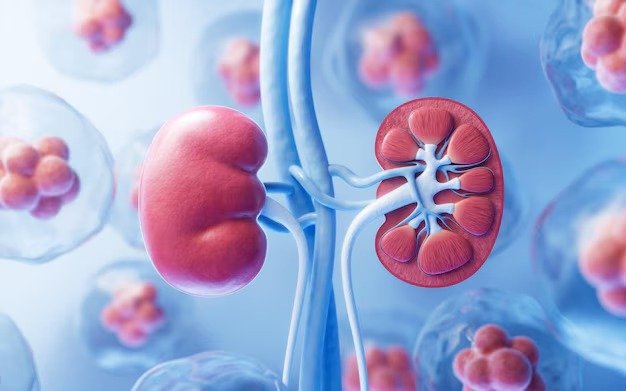Every drug that reaches your pharmacy shelf undergoes a remarkable journey, traversing through various stages of research, development, manufacturing, and regulation. This journey is a testament to scientific innovation and a demonstration of stringent quality standards and regulatory compliance.
In this article, we delve into the comprehensive process of how a drug evolves from its conception in research and development (R&D) laboratories to its availability on the shelves of pharmacies worldwide. Along with a keen focus on the value chain expertise and the significance of WHO/EU GMP certifications.
Research & Development (R&D)
The research and development phase is at the heart of every drug’s journey. Here, pharmaceutical companies invest significant resources into discovering new molecules or repurposing existing ones to address unmet medical needs.
This phase involves many scientific disciplines, including medicinal chemistry, pharmacology, and toxicology. Researchers meticulously screen thousands of compounds, seeking those with the desired therapeutic effects and minimal side effects. Consequently, once a promising compound is identified, it undergoes preclinical testing, where its safety and efficacy are evaluated in laboratory settings and animal models. This stage is crucial for determining whether the compound warrants further development.
Clinical Trials
Upon successful completion of preclinical studies, the drug candidate progresses to clinical trials – the cornerstone of drug development. These trials are divided into phases and involve rigorous testing in human subjects to assess safety, efficacy, and optimal dosage. These phases are:
- Phase 1: Primarily focuses on small-scale testing for safety and dosage in healthy volunteers.
- Phase 2: Testing in a larger group to determine efficacy and side effects.
- Phase 3: Large-scale testing in diverse populations to confirm efficacy and monitor adverse reactions.
- Phase 4: Post-marketing surveillance for long-term safety and efficacy.
Regulatory Approval
Adherence to Good Manufacturing Practices (GMP) is central to the pharmaceutical value chain. GMPs are a set of quality assurance guidelines that ensure the consistent production of safe and effective pharmaceutical products. Recognizing the global nature of pharmaceutical manufacturing, organizations such as the World Health Organization (WHO) and the European Union (EU) have established GMP standards to harmonize quality standards worldwide.
Additionally, when a drug developer has gathered evidence demonstrating a drug’s safety and efficacy, they file a New Drug Application (NDA) with the FDA. This comprehensive document includes all relevant data from preclinical and clinical studies, proposed labeling, safety updates, and more.
Upon receiving the NDA, the FDA review team meticulously examines its contents. If deemed complete, the team has 6 to 10 months to decide on approval. Each team member conducts a thorough review, supplemented by on-site inspections, to ensure data integrity.
However, if the FDA determines the drug is safe and effective, labeling is refined to reflect its approved uses. Sometimes, additional studies or clarifications are requested before final approval.
Manufacturing
After regulatory approval, pharmaceuticals enter the manufacturing phase. This phase is marked by meticulous attention, stringent quality control, and advanced technology to ensure safe and effective drug production.
Raw Material Sourcing and Quality Assurance
Manufacturing starts with getting raw materials. Manufacturers carefully choose suppliers by checking their facilities to ensure the raw materials are pure and potent, avoiding contamination that could harm the final product. They also check if suppliers follow Good Manufacturing Practices (GMP) to maintain quality standards.
Formulation and Process Development
Pharmaceutical manufacturers optimize drug composition during formulation and process development for efficiency and patient compliance. Scientists assess solubility, stability, and administration routes. And, engineers design manufacturing processes for consistency and quality.
Manufacturing Operations and Quality Control
Pharmaceutical manufacturers move to large-scale production in advanced facilities, ensuring precise control. Each step is monitored for cleanliness and integrity, with quality control labs conducting comprehensive testing. This testing includes HPLC and mass spectrometry, to verify product quality and regulatory compliance.
Packaging and Distribution
After manufacturing, pharmaceutical products are packaged and labeled to safeguard against the environment and tampering while providing essential information. Manufacturers use various packaging formats tailored to dosage forms. These products are then distributed to wholesalers, distributors, and pharmacies, reaching patients.
Post-market Surveillance
Drug safety is a continuous process. Although clinical trials offer critical insights into a drug’s efficacy and safety, complete safety understanding isn’t immediate upon approval. A complete safety profile is only formed over time in the market. The FDA monitors drugs post-approval, updating information and issuing cautions or other measures if needed.
It includes changes via supplemental applications, new uses via INDs, and routine inspections of manufacturing facilities. The FDA also regulates drug advertising to ensure accuracy and prohibits unapproved uses. Moreover, programs like MedWatch and MedSun facilitate reporting problems and enhance post-market safety monitoring.
Collaboration Across the Value Chain: A Network of Expertise
The journey of a drug from R&D to the pharmacy shelf requires expertise at every stage of the value chain. Pharmaceutical companies collaborate with a diverse network of stakeholders, including scientists, clinicians, regulatory experts, and manufacturing professionals, to navigate the complexities of drug development and commercialization.
Research and development teams leverage their scientific power to identify promising drug candidates and optimize their properties for clinical use. Clinical researchers conduct trials with precision and adherence to ethical standards, generating robust data for regulatory submission. Regulatory affairs specialists liaise with regulatory agencies to ensure compliance with evolving guidelines and expedite the approval process.
In manufacturing facilities, engineers and technicians employ cutting-edge technologies to streamline production processes and maintain the highest standards of quality.
From Research to Market: A Journey of Expertise
The journey of a drug from conception to pharmacy shelves is a testament to scientific collaboration and regulatory diligence. From meticulous research and clinical trials to stringent manufacturing and post-market surveillance, each stage relies on a network of expertise.
Interdisciplinary collaboration and strict adherence to WHO/EU GMP standards guarantee safe, effective medications reach global patients. From research laboratories to manufacturing plants, each contributor plays a vital role in advancing the drug along its journey, culminating in its availability to patients in need.







